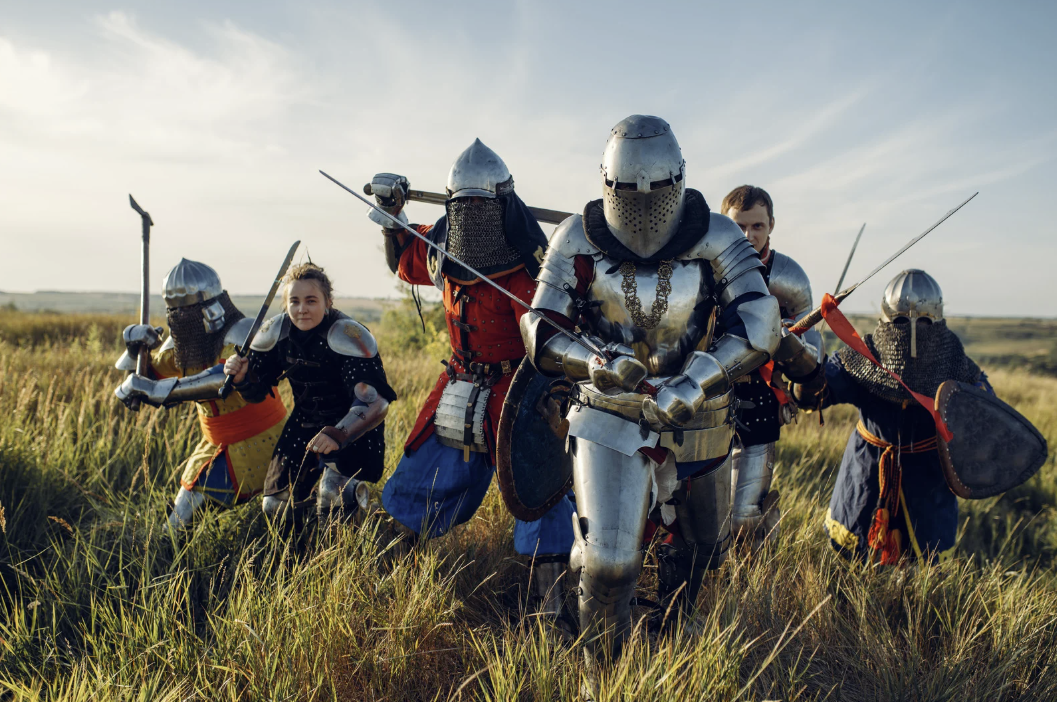In most works, the main character (MC) is the protagonist, the narrator, and the hero. It’s a lot of jobs, but someone’s got to do it, and who better than your MC, right?
However, this is not always the case. These roles don’t have to overlap, and changing this up can add some spice to your story—if done strategically instead of accidentally. So let’s dig into how and why these roles may split with some examples of each.
Protagonist but Not the Main Character
The protagonist is the character who drives the plot. Their decisions propel the story forward.
On the other hand, the MC is the central character. The story follows them.
Historically, the idea of separating the protagonist and the MC was much more common that it is today:
- All of Arthur Conan Doyle’s stories about Sherlock Holmes (protagonist) are told by and centered around John Watson (MC).
- The Great Gatsby by F. Scott Fitzgerald centers around Nick Carraway (MC) but is driven by Jay Gatsby (protagonist).
- One Flew Over the Cuckoo’s Nest by Ken Kesey tells the story of Randle McMurphy (protagonist) entirely through the eyes of Chief Bromden (MC).
Today, this seems less common—with the exception of the detection genre, where it is still used, likely in homage to Sherlock Holmes. One such example is Anthony Horowitz’s The Word Is Murder, where Horowitz serves as the Watson to detective Daniel Hawthorne’s Holmes.
One modern example outside the mystery genre is Premee Mohamed’s And What Can We Offer You Tonight in which Jewel, the MC, is largely inactive, observing the happenings around her—which are driven by the vigilante protagonist Winfield. Winfield’s actions, both on the page and off the page, change Jewel’s life in major ways.
There are several benefits to this technique. First, it offers you the chance to examine the protagonist from an outside lens, leaving them some mystery that wouldn’t be possible with a closer connection. Also, it enables you to kill off the protagonist. In fact, in four of the five examples I’ve mentioned, the protagonist dies—although in some they don’t stay dead.
Main Character but Not the Narrator
The narrator tells the story. Their voice shapes the story in what they chose to tell and leave out.
Typically, the MC is the main narrator; the story is told primarily in their voice, whether it’s first-person, third-person, or (in rare instances) second-person point of view. In all the above examples, the MC was the first-person narrator. In stories using multiple point-of-view characters, the MC usually narrates for the majority of the page space.
However, with an omniscient voice there is an all-knowing narrator who is not part of the story. There are too many books written in omniscient voice to bother listing. However, often this voice is that of a subtle storyteller. This narrator doesn’t normally feel like a character.
But this doesn’t need to be the case. The omniscient narrator can have such a strong voice that they become a character themselves, projecting their opinions and thoughts onto the story. This is most commonly seen in humorous works, such as Douglas Adams’s The Hitchhiker’s Guide to The Galaxy and Terry Pratchett’s Discworld novels.
In addition to adding humor, the omniscient narrator allows the narrator to share information with the reader that the characters may not know.
Protagonist but Not the Hero
The hero rises to a challenge, exhibiting positive traits, such as selflessness, courage, and ingenuity. In modern fiction, a hero seeks to do good, whereas the classical hero, such as Achilles, was typically after glory or honor.
The idea that the MC or the protagonist must be the hero is one that seems to trip up even experienced writers. “Protagonist” does not mean “good person.” In fact, the protagonist can be the villain of the story. This does not make them the antagonist. The protagonist–antagonist divide has nothing to do with morals. The antagonist is simply the character that opposes the protagonist, adding complications and obstacles to the story.
When writing a villainous protagonist, writers should be aware that some readers will not realize this—no matter how evil you make your character. For example, some viewers of the show The Boys didn’t realize that Homelander, a fascist sociopath, was the villain until the third season. The same was true with the villainous protagonist, Light Yagami, of the manga and anime Death Note, despite Light being a power-hungry mass murderer complete with maniacal laughter.
In college, I had a professor who adored Humbert Humbert of Vladimir Nabokov’s Lolita. This character is a pedophile who repeatedly rapes a child; however, he is the protagonist (and MC and narrator) so some readers naturally sympathize with him.
An important point about the villainous protagonist is that these are characters that the author intends to be villains. This is not a mistake by the author or a representation of their skewed sense of morality but a craft decision to challenge the reader to view a story from an unusual angle.
However, protagonists can be neither heroes nor villains. They can be anti-heroes, who have major flaws or lack the “heroic spirit,” but their goals, while possibly selfish, are not evil. There are many examples of anti-hero protagonists across literature, from the titular character in Shakespeare’s Hamlet to the aforementioned Jay Gatsby.
Choose with Care
I hope this blog has made you think more strategically about these four roles and how shifting them changes the reader’s experience—possibly enabling you to tell a more compelling story (or, if done poorly, confusing the hell out of your reader). If you can think of other examples of stories that broke the mold, put them in the comments.
If you enjoyed this article, subscribe to my newsletter and get a free copy of The Ultimate Drabble Writing Guide!

